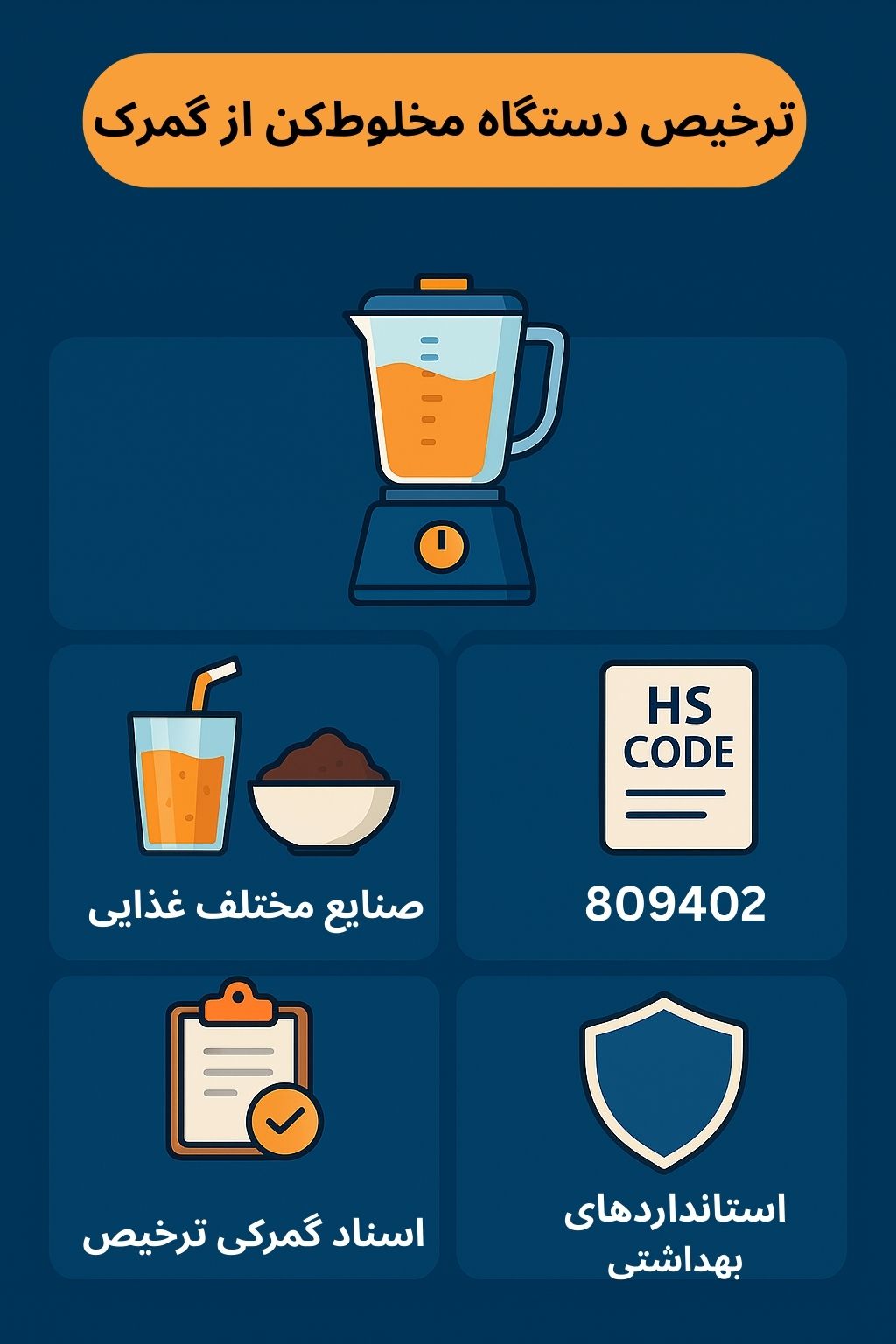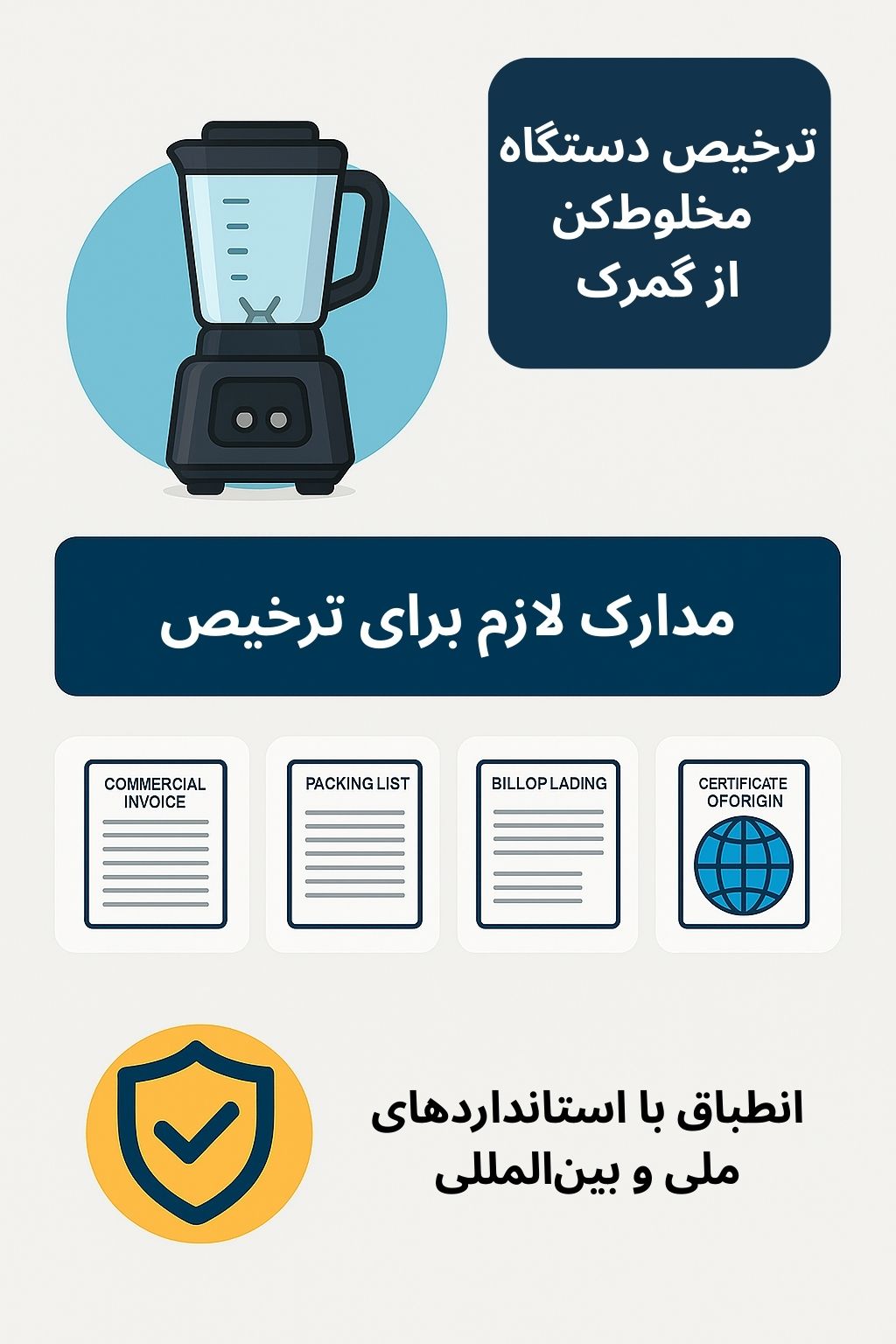Customs clearance of blenders from Iranian customs (HS 85094020 + documents and permits)
To estimate the time and cost of clearing household and industrial blenders, contact the experts at Saba Tarkhis.
Immediate Free Consultation
1) Applications of blenders
2) Key points in clearing blenders
1. Customs tariff code (HS Code)
2. Required documents for clearance
Packing List: This document includes details about packaging and the number of packages and is necessary for physical inspection by customs appraisers.
Bill of Lading: Issued by the carrier, it indicates ownership of the goods and the shipping details.
Certificate of Origin: This certificate states the producing country and is required to apply preferential tariffs or avoid additional duties.
Health permit from the Food and Drug Organization: If the blender is imported for direct contact with food, this permit is mandatory. It ensures the device is hygienically safe and meets required standards.
3. Health standards and regulations
| Item | Short description | HS Code |
|---|---|---|
| Electric blender (household/industrial) | blender for kitchen/industrial use; direct contact with food | 85094020 |
Final subheading selection depends on application, power, accessories, and safety/hygiene features.
Need precise HS Code determination, health permits, and document preparation? Our team manages the case end-to-end.
Submit Proforma Request3) Clearance steps and process
Inspection and appraisal of goods: After blenders arrive at customs, appraisers physically inspect and evaluate the goods based on the provided documents. This includes checking the number and type of devices, their conformity with documents, and assessing the true value for determining customs duties.
Payment of customs charges: After final appraisal, import duties, value added tax, and other related charges must be paid. These costs vary depending on the goods’ value and set tariffs. Payment is usually made electronically, and once confirmed, the goods are ready for release.
Final release of goods: After paying customs charges and receiving customs approval, the goods are ready for release. At this stage, the final release permit is issued and the goods can be transported to their final destination. For faster clearance, experienced customs brokers are usually engaged to navigate the process and quickly resolve potential issues.

4) Import/export conditions and market status
Exports: Exports of Iranian-made blenders to neighboring countries are estimated at around 3,000 units per year. These exports are mainly to developing economies with demand for household equipment.
Frequently Asked Questions
What is the HS Code for blenders?
Electric blenders are generally classified under 85094020; final determination depends on technical specifications and use.
What documents are required for clearance?
Commercial invoice, packing list, bill of lading, certificate of origin, and a health permit (for food contact) are key documents.
Is a specific standard required?
For direct food contact, compliance with HACCP or ISO 22000 is recommended and in some cases required.
Special customs services by Saba Brokerage
With years of experience and expertise in customs clearance, our brokerage offers distinctive, premium services to clients. Some of Saba Brokerage’s special services include:
Professional, specialized consulting: Our experts, fully aware of customs laws and regulations and experienced in clearing blenders, are ready to guide you through all stages of import and clearance. From choosing the best tariff code to preparing and completing the necessary documents, everything is done accurately and quickly.
Accurate and continuous follow-up: We continuously track the clearance status of your goods. From arrival at customs to obtaining the final release permit, our experts are present at every stage and promptly act in case of any issue or delay.
Reducing costs and clearance time: By using Saba Brokerage’s services, you can minimize your customs costs. This is achieved through selecting the most suitable transportation methods, negotiating with suppliers, and optimizing clearance processes.
Post-clearance services: Our team’s services are not limited to clearance. After release, we are ready to support you with warehousing, domestic transport, and distribution in the domestic market—helping you manage your import process completely and smoothly.
Quality assurance and customer satisfaction: Our primary goal is to deliver quality services and achieve full customer satisfaction. By providing precise, fast, and cost-effective services, we strive to offer you a positive, hassle-free experience.
Customs clearance of blenders is a sensitive, complex process requiring full awareness of customs laws/regulations, proper documentation, and continuous follow-up. With Saba Brokerage’s services, you can complete this process with full confidence and without concern. Our experienced team offering professional consulting, diligent follow-up, and comprehensive post-clearance services will be with you at every stage.
.png)
